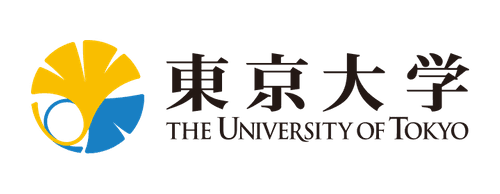

The Hongo Campus of The University of Tokyo is the main campus and serves as the academic and administrative heart of the university. It hosts a wide range of undergraduate and graduate programs across various disciplines. This campus is home to the Faculty of Law, Faculty of Economics, Faculty of Letters, Faculty of Education, and parts of the Faculty of Science and Faculty of Engineering. Students can pursue degrees in humanities, social sciences, and natural sciences, with a strong emphasis on research and innovation.
The campus provides state-of-the-art facilities, including libraries, laboratories, and lecture halls, fostering an environment conducive to cutting-edge research and interdisciplinary collaboration. Many of the university's iconic buildings, such as the Yasuda Auditorium, are located here, symbolizing its long history and tradition of academic excellence. Students at Hongo Campus benefit from proximity to central Tokyo, offering access to cultural and professional opportunities. The campus also serves as a hub for international exchange, with numerous programs and partnerships with universities worldwide, ensuring a global perspective in education.
The Kashiwa Campus of The University of Tokyo is a hub for advanced research and graduate education, located in Chiba Prefecture. It focuses on cutting-edge interdisciplinary studies, particularly in the fields of science, technology, and environmental studies. This campus houses several graduate schools and research institutes, emphasizing innovation and collaboration across traditional academic boundaries.
The Kashiwa Campus is designed to foster a research-intensive environment with state-of-the-art laboratories and facilities. It is home to the Graduate School of Frontier Sciences, which encourages students to tackle global issues through innovative approaches. The campus's location in a science city, surrounded by other research institutions, facilitates collaboration and access to cutting-edge resources. Students and researchers at Kashiwa are often engaged in projects that address pressing societal needs, such as renewable energy and climate change mitigation. The campus also supports international partnerships, attracting scholars from around the world. With its focus on graduate education and research, Kashiwa Campus plays a pivotal role in advancing The University of Tokyo's mission of contributing to global knowledge and innovation.
The Komaba Campus of The University of Tokyo primarily serves as the base for the College of Arts and Sciences, focusing on liberal arts education for undergraduate students. This campus is dedicated to providing a broad-based education before students specialize in their chosen fields at other campuses. It emphasizes critical thinking, interdisciplinary studies, and foundational knowledge across humanities, social sciences, and natural sciences.
Komaba Campus is known for its vibrant student life and green surroundings, offering a serene environment for academic pursuits. The campus hosts numerous student organizations, cultural events, and sports activities, fostering a strong sense of community. Its curriculum is designed to cultivate well-rounded individuals equipped with analytical skills and global awareness. Many students transition to specialized programs at Hongo or other campuses after completing their initial years here. The campus also supports international students through language support and exchange programs, ensuring an inclusive academic environment. With modern facilities and a focus on undergraduate education, Komaba plays a crucial role in shaping the early academic journey of students at The University of Tokyo.
The Nakano Campus of The University of Tokyo is a smaller facility primarily used for specific research and educational activities. It supports specialized programs and serves as an auxiliary location for certain university functions, often hosting events, workshops, and collaborative projects. While not a primary academic campus, it plays a supportive role in the university's broader mission.
The Nakano Campus is strategically located in a residential area of Tokyo, making it accessible for community-based initiatives and smaller-scale academic activities. It does not house full degree programs like the larger campuses but instead focuses on supplementary education and research support. The facilities are tailored for seminars, training sessions, and collaborative meetings, often involving external partners or alumni. This campus reflects The University of Tokyo's commitment to extending its educational reach beyond traditional academic settings, fostering lifelong learning and professional growth. Its role, though limited in scope compared to Hongo or Komaba, is vital in maintaining the university's diverse portfolio of educational and research offerings, ensuring flexibility and adaptability in meeting various academic and societal needs.
The Shirokanedai Campus of The University of Tokyo is primarily associated with the Institute of Medical Science, focusing on advanced medical research and education. Located in central Tokyo, this campus plays a critical role in the university's contributions to healthcare and biomedical sciences, offering specialized programs for graduate students and researchers.
The campus is equipped with cutting-edge laboratories and facilities dedicated to medical research, including collaborations with hospitals and international research networks. It serves as a center for pioneering studies in areas such as cancer research, infectious diseases, and regenerative medicine. Students and faculty at Shirokanedai Campus are often involved in projects that have direct implications for improving human health globally. The campus's location in Minato-ku provides easy access to medical institutions and industry partners, fostering practical applications of research. With a strong emphasis on graduate education, Shirokanedai contributes significantly to The University of Tokyo's reputation as a leader in medical science and innovation, attracting top talent from around the world to address critical health challenges.
There are currently no jobs available.
Get alerts from AcademicJobs.com as soon as new jobs are posted